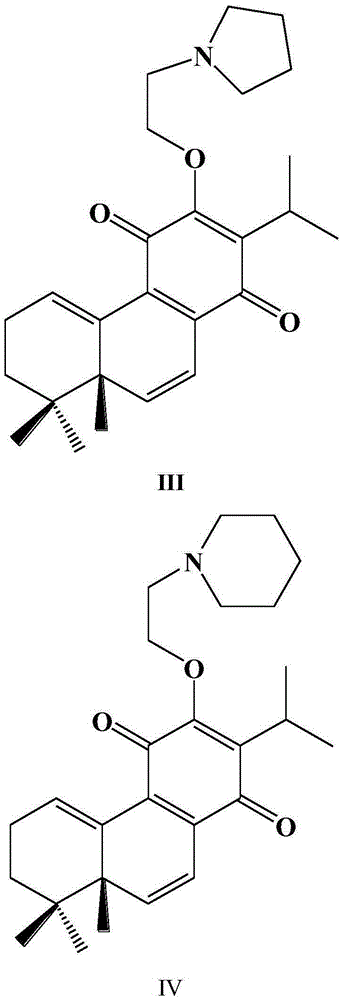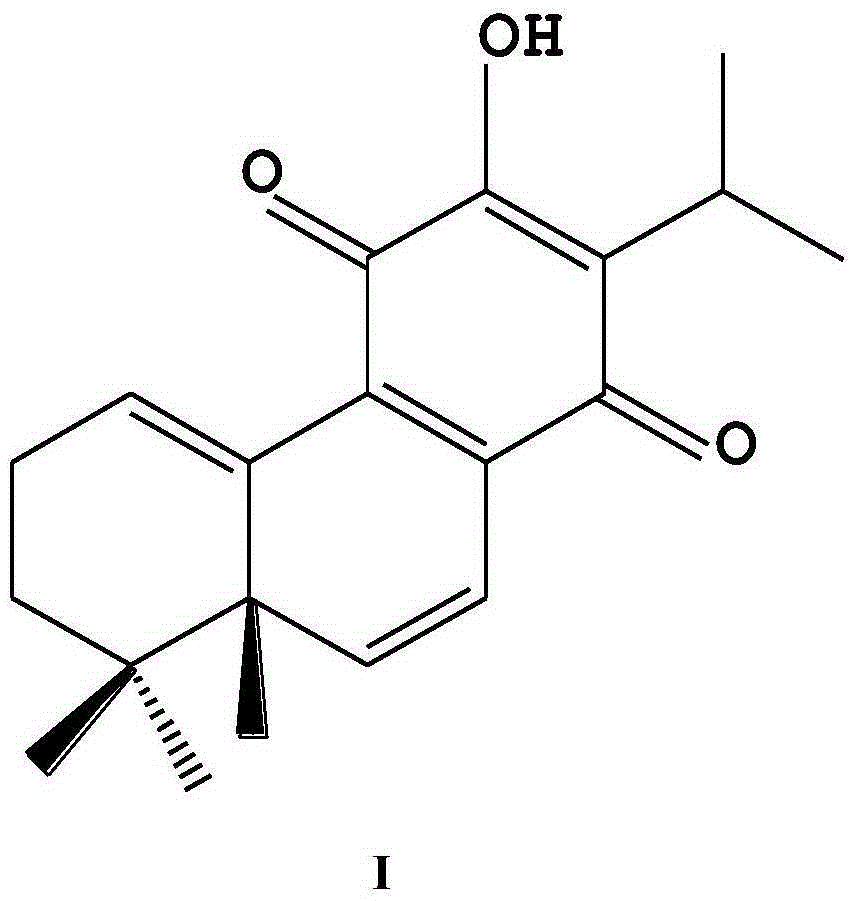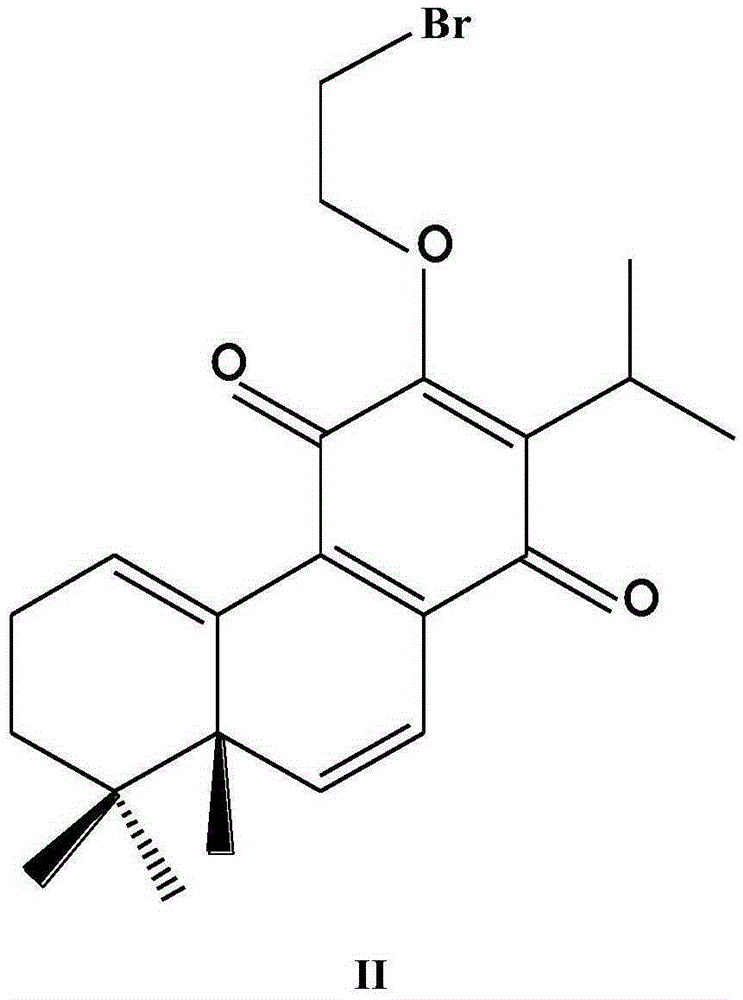Composition and application thereof to medicines capable of increasing leukocytes
A technology for increasing white blood cells and compositions, which can be used in drug combinations, extracellular fluid diseases, active ingredients of heterocyclic compounds, etc., and can solve the problems of high toxicity and low safety of white blood cells
- Summary
- Abstract
- Description
- Claims
- Application Information
AI Technical Summary
Problems solved by technology
Method used
Image
Examples
Embodiment 1
[0010] The preparation of embodiment 1 compound SalviskinoneA
[0011] The preparation method of the compound Salviskinone A (I) refers to the method published by Ayumi Ohsaki et al. (Ayumi Ohsaki et al., 2011. Salviskinone A, aditerpenewithanewskeleton from Salviaprzewalskii. Tetrahedron Letters 52 (2011) 1375-1377).
[0012]
Embodiment 2
[0013] The synthesis of the O-bromoethyl derivative (II) of embodiment 2SalviskinoneA
[0014] Compound I (312 mg, 1.00 mmol) was dissolved in 15 mL of benzene, and tetrabutylammonium bromide (TBAB) (0.08 g), 1,2-dibromoethane (3.760 g, 20.00 mmol) and 6 mL of 50% sodium hydroxide solution. The mixture was stirred at 35 °C for 12 h. After 12 hours, the reaction solution was poured into ice water, extracted twice with dichloromethane immediately, and the organic phase solutions were combined. Then the organic phase solution was washed with water and saturated brine four times successively, then dried with anhydrous sodium sulfate, and finally concentrated under reduced pressure to remove the solvent to obtain a crude product. The crude product was purified by silica gel column chromatography (mobile phase: petroleum ether / acetone=100:1.5, v / v), the brown concentrated elution band was collected and the solvent was evaporated to obtain a brown powder of Compound II (327mg, 78%)...
Embodiment 3
[0019] The synthesis of the O-(tetrahydropyrrolyl) ethyl derivative (III) of embodiment 3SalviskinoneA
[0020] Compound II (209 mg, 0.5 mmol) was dissolved in 20 mL of acetonitrile, anhydrous potassium carbonate (345 mg, 2.5 mmol), potassium iodide (84 mg, 0.5 mmol) and pyrrolidine (1420 mg, 20 mmol) were added thereto, and the mixture was heated to reflux for 8 h. After the reaction, the reaction solution was poured into ice water, extracted three times with an equal amount of dichloromethane, and the organic phases were combined. The combined organic phases were successively washed with water and saturated brine, dried over anhydrous sodium sulfate, and concentrated under reduced pressure to remove the solvent to obtain a crude product. The crude product was purified by silica gel column chromatography (mobile phase: petroleum ether / acetone=100:1.0, v / v), the brown concentrated elution band was collected and the solvent was evaporated to obtain a yellow powder of compound I...
PUM
 Login to View More
Login to View More Abstract
Description
Claims
Application Information
 Login to View More
Login to View More - R&D
- Intellectual Property
- Life Sciences
- Materials
- Tech Scout
- Unparalleled Data Quality
- Higher Quality Content
- 60% Fewer Hallucinations
Browse by: Latest US Patents, China's latest patents, Technical Efficacy Thesaurus, Application Domain, Technology Topic, Popular Technical Reports.
© 2025 PatSnap. All rights reserved.Legal|Privacy policy|Modern Slavery Act Transparency Statement|Sitemap|About US| Contact US: help@patsnap.com



